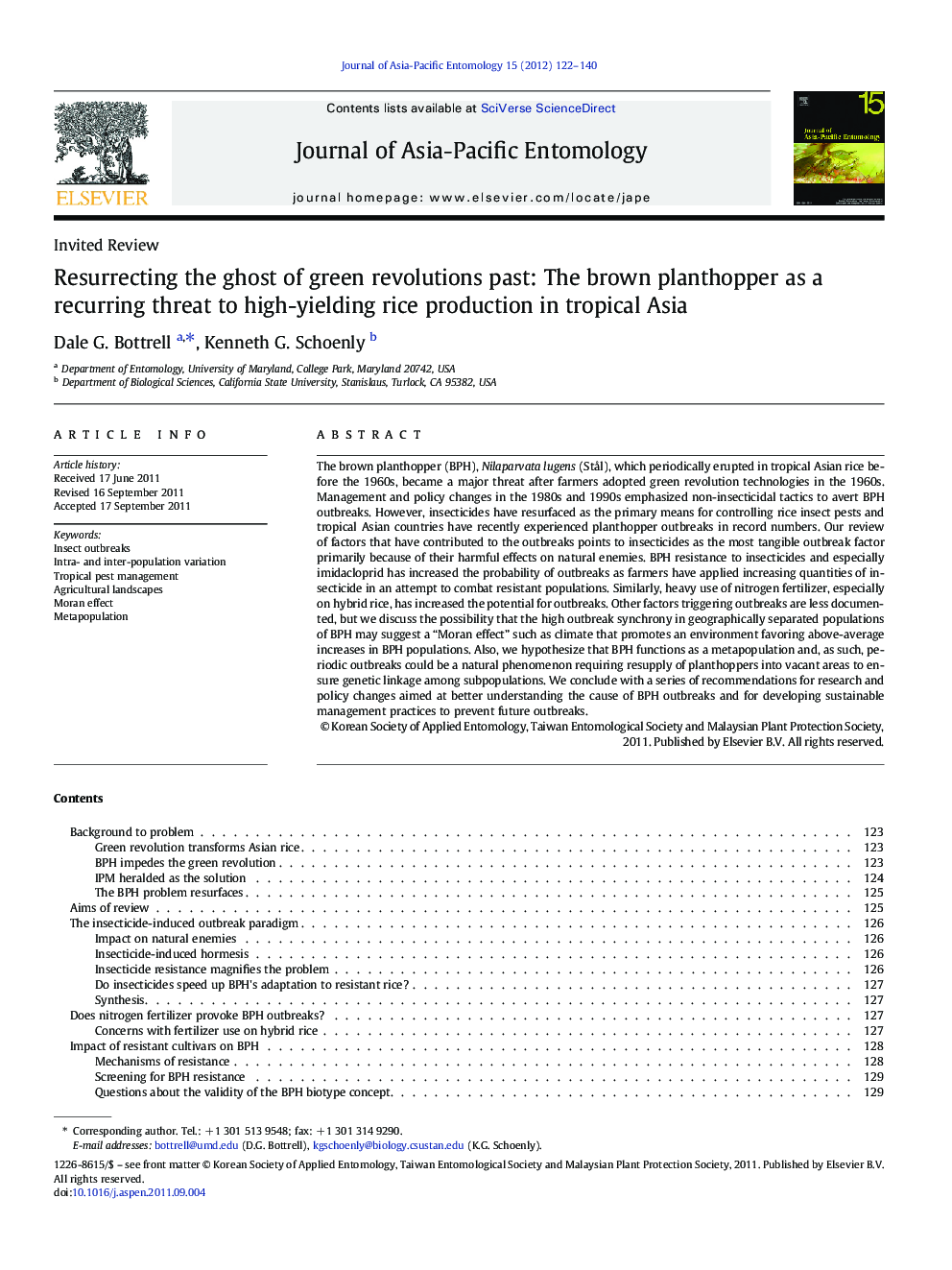| کد مقاله | کد نشریه | سال انتشار | مقاله انگلیسی | نسخه تمام متن |
|---|---|---|---|---|
| 4524796 | 1323592 | 2012 | 19 صفحه PDF | دانلود رایگان |

The brown planthopper (BPH), Nilaparvata lugens (Stål), which periodically erupted in tropical Asian rice before the 1960s, became a major threat after farmers adopted green revolution technologies in the 1960s. Management and policy changes in the 1980s and 1990s emphasized non-insecticidal tactics to avert BPH outbreaks. However, insecticides have resurfaced as the primary means for controlling rice insect pests and tropical Asian countries have recently experienced planthopper outbreaks in record numbers. Our review of factors that have contributed to the outbreaks points to insecticides as the most tangible outbreak factor primarily because of their harmful effects on natural enemies. BPH resistance to insecticides and especially imidacloprid has increased the probability of outbreaks as farmers have applied increasing quantities of insecticide in an attempt to combat resistant populations. Similarly, heavy use of nitrogen fertilizer, especially on hybrid rice, has increased the potential for outbreaks. Other factors triggering outbreaks are less documented, but we discuss the possibility that the high outbreak synchrony in geographically separated populations of BPH may suggest a “Moran effect” such as climate that promotes an environment favoring above-average increases in BPH populations. Also, we hypothesize that BPH functions as a metapopulation and, as such, periodic outbreaks could be a natural phenomenon requiring resupply of planthoppers into vacant areas to ensure genetic linkage among subpopulations. We conclude with a series of recommendations for research and policy changes aimed at better understanding the cause of BPH outbreaks and for developing sustainable management practices to prevent future outbreaks.
The “insecticide-induced outbreak paradigm” for the rice planthopper (BPH), Nilaparvata lugens (Stål), in tropical rice ecosystems. Insecticides, primarily because of their harmful effects on natural enemies, are the most tangible factor contributing to recent BPH outbreaks, but other factors might also encourage outbreaks. Photos courtesy of the International Rice Research Institute (IRRI).Figure optionsDownload as PowerPoint slideHighlights
► Asia has recently experienced planthopper outbreaks in record numbers.
► Insecticides appear to be triggering BPH outbreaks.
► A “Moran effect” such as climate may be promoting the high BPH outbreak synchrony in geographically separated populations.
► BPH appears to function as a metapopulation.
► Solving the BPH problem requires a multidisciplinary cooperative effort of tropical and temperate countries in Asia.
Journal: Journal of Asia-Pacific Entomology - Volume 15, Issue 1, March 2012, Pages 122–140